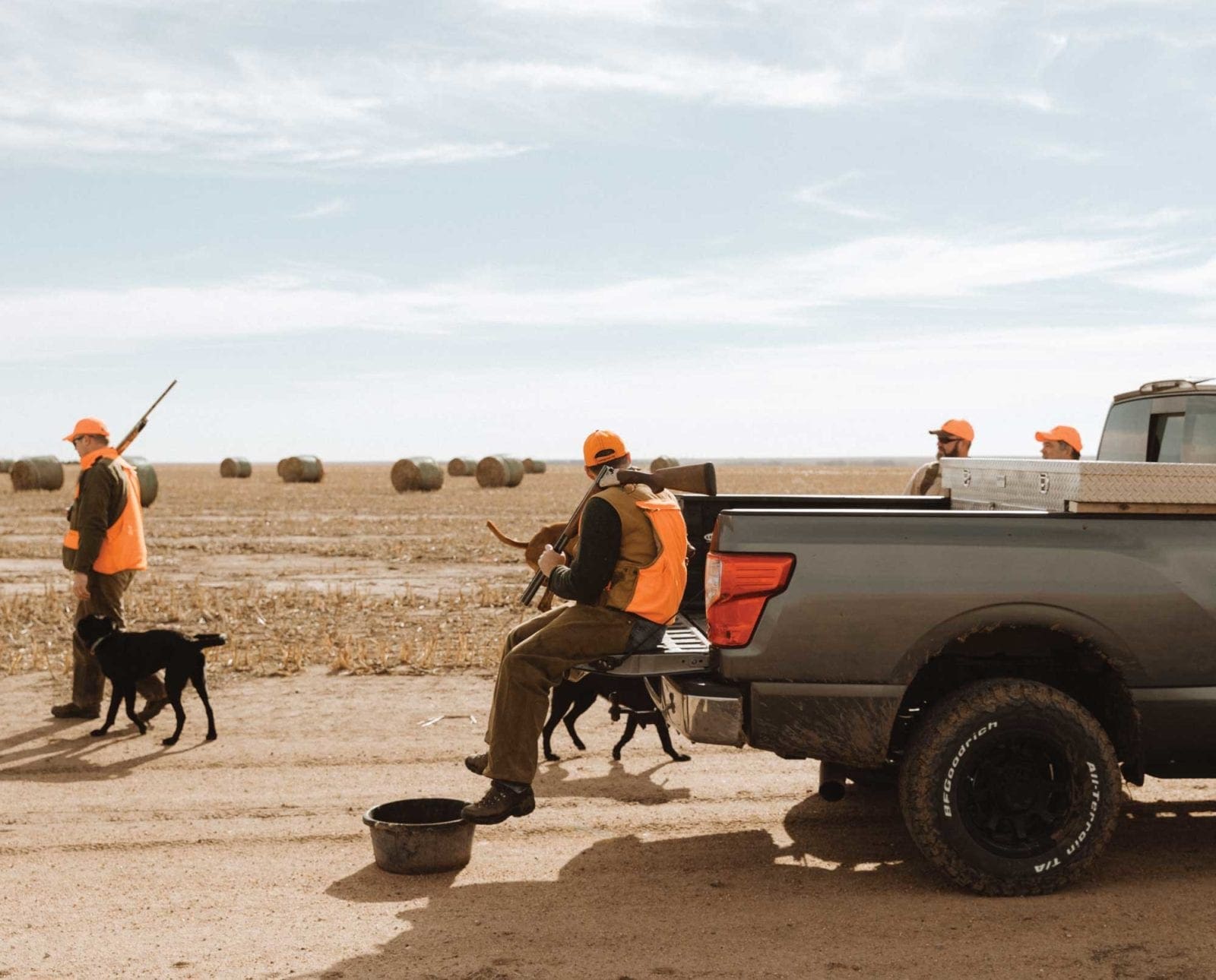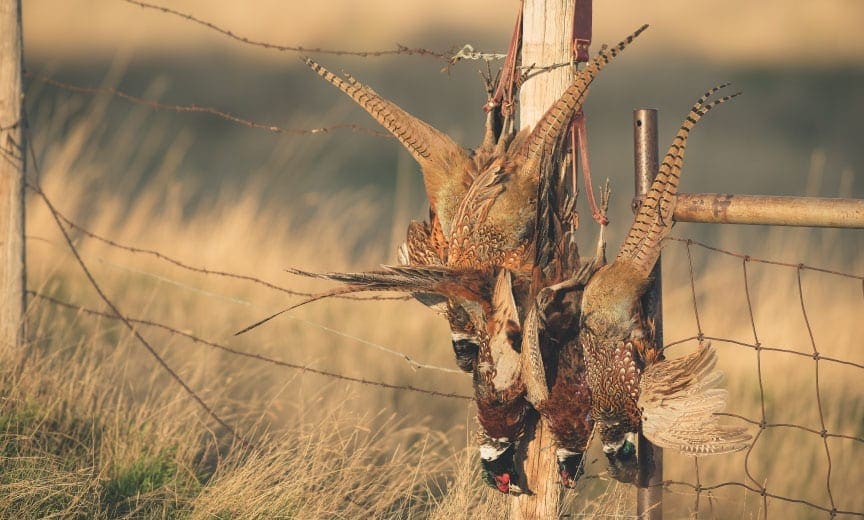Home » Traveling to Hunt » A Beginner’s Guide to Upland Road Trips
A Beginner’s Guide to Upland Road Trips

Adam Grinstead is a 3rd generation bird hunter born and…
Upland hunting road trips can be an amazing experience
Look, I understand. You’ve seen countless social media posts about how productive this corner of the state is. Your news feed is stacked with photos and stories of covey after covey that hold tight for dogs with any suggestion of point drive. In reality, the vast majority of these photos were taken by local dedicated bird hunters with dogs that have a Ph.D. in the habits and terrain of their local quarry. Or are at least veteran road trip hunters who have already been there and hunted that. The tailgate shot on social media is just the sum of hundreds of hours and hundreds of miles.
But alas, you do not have the time to invest in gathering this amount of on-the-ground information. It’s been my experience that left to its own devices, an upland road trip can quickly leave a beginner flustered, unable to identify proper cover, and driving in circles looking for “the field of dreams” where birds flush from the cornucopia as you drive bye, cackling, “Come hunt here!”
As I have yet to have this happen, here are a few ideas to help avoid the road trip traps that I have found myself in over the years.

Leave any notions or expectations of bird numbers behind
I would suspect this is fairly obvious. There are countless variables that will affect the number of birds harvested, or even coveys flushed. I find it better for myself to set goals more attainable. Like moving one covey of my targeted game bird species for the day. If we find more, it’s a bonus! If we connect and shoot a bird, then it’s also a bonus!
More dog running, less road driving
This is a major pitfall for me. The simple fact is the longer you can chase dogs on the ground, the more birds you will find. Again this seems obvious, but you might be surprised at how easy it is to convince yourself that if you just head to that next spot, birds will surely be found in better numbers. Really, if you did homework, it’s likely that there are birds in the field you are hunting now. However, if you are thorough and aren’t finding what you’re looking for, by all means head to greener pastures.
Spot trading
With the advent of social media, these days it’s not out of the question to find a local who’s looking to make a road trip to your area of the country. They could be willing to trade information about places to hunt, or at least types of habitat to keep an eye out for. With some tact a hunter can usually end up with at least a place to start and perhaps a new hunting buddy.
P.S. Don’t be the guy that hops on his favorite Facebook upland page and asks “Headed to S.D. for a rooster road trip! Anyone with a public land place to kill stacks!?” This is how you get blackballed in the upland community.
If possible, make time to check out something other than the birds
If time affords, it can be nice to give yourself and your dogs a break. I myself love history and will often read or listen to books that pertain to the area that I plan on hunting. This can lead to an afternoon trip to a battlefield, or maybe a cavern with ancient petroglyphs. If there is any possibility for a run-in with a trout, you will probably find me in a river with a fly rod at some point. The idea is to enjoy your trip, and sometimes a short break to look around will help enhance your upland vacation.
Enjoy your time with the community
The vast majority of folks, beginners and veterans, will be making these trips with a partner or even a party. Whether it’s a fellow bird hunter that you’ve just met a few weeks ago or your family, these hunts can be a great way to cultivate a relationship. I, for one, have met and made trips with several people who are now lifelong friends, thanks to the uplands. There are also a few of us who are lucky enough to enjoy the company of our significant other while chasing dogs and birds.
These are special times not often afforded by a society built around jobs and money; they are far and few between. Those moments are valuable, with an intrinsic kind of value. Guard them against the stress of success or the pressure to get that photo that will bring the most likes. I know that I’m guilty.
Adam Grinstead is a 3rd generation bird hunter born and raised in Georgia. He recently moved to Idaho where he love to follow his American brittany across public lands of the West




Great article and true in every point !
Great advice, I’ve been guilty of many of the above “try not to do’s”…after almost missing a season due to major injury/surgery and realizing my seasons truly are limited, I strive to simply enjoy the opportunity to be in the uplands. The memories I carry with me aren’t the number of birds, limits, etc but rather the amazing dog work, a good laugh with buddies, the amazing views, new friends made, and the many adventures we’ve had afield. Good luck to all this coming season.
Don’t dismiss a trip for yourself, just you and the dogs. Forget the friends, the tavern trips, the discussions of where to stay or what to eat. Me and my dogs have no problem agreeing on all the important questions. Very relaxing, although very confusing for friends and coworkers that don’t understand the friendship between man and dog!
Nice article. Not sure I prescribe to the “more dog running, less driving” for identifying new road trip properties. I start my road trips with research of habitat and the year’s last weather to predict high likelihood areas. The research for some may need to start with what weather patterns and habitat are conducive to producing birds. Most of my research is with Google Earth, a digital map that shows land ownership (i.e. Gaia, Onyx, many states’ wildlife offices), and lots of NOAA maps (i.e. rainfall, temp, snowstorm data, etc.). A call to the local conservation officer can be very worthwhile.
I’ll drive what it takes to get to good habitat and seasonal weather that should have produced birds. Before I arrive, I’ll have land access highlighted on a tablet and phone to aid my windshield search for the place to park. Sometimes I’ll drive through a huntable area looking for tracks, or park with binoculars at first/last light and look for birds moving. Evaluating habitat and sign directly, I may drive to another place if my observations don’t measure up to my expectations from research.
My dogs get plenty of running. Road time is often necessary rest time for them. Make sure the kennels are comfortable. “More pre-hunt research, focused dog running, and whatever driving it takes,” are my recipe for road trips.
Great article Adam! You make some really good points! I am hoping to do something like this next year!
Very good article and spot-on with your tips. I might add when returning to a road trip destination I always try to add one new spot each year rather than relying just on the hotspots found the previous year. This keeps the hunting fresh and allows you to rely on several good spots as conditions change.